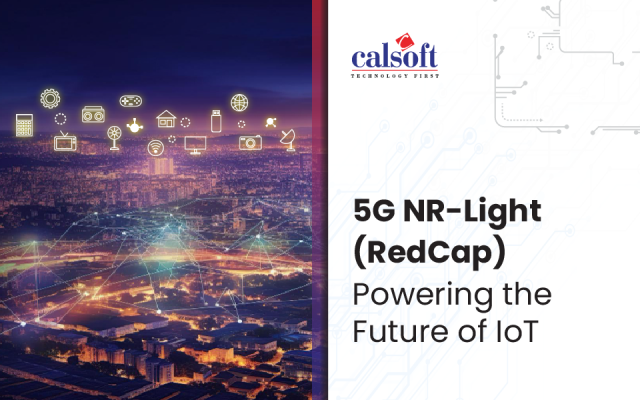The growth of the telecom industry has been phenomenal, urging global connectivity and communication to exceptional levels. The growth is driven by innovation and mounting demand for faster and highly reliable communication. The year 2024 will be a new era for the telecom industry for further pioneering transformation.
If we explore the growth curve of the telecom industry, technologies like 5G and beyond and the Internet of Things (IoT) are expected to increase the number of subscriptions to 2.8 billion by the close of 2023 (as per the Ericsson Mobility Report). Additionally, the rise of massive IoT devices and connections is set to beat 20 billion by the end of 2023.
This blog details the key trends that will shape the telecom industry in 2024, providing insights into the business stance of telecom companies.
Key Telecom Trends in 2024
5G and Beyond
5G technology promises ubiquitous connectivity, ultra-high reliability, and ultra-low latency communications. The telecom industry embraced the growth of this technology to support various industry verticals. With the widespread of this disruptive technology, the telco industry is also looking forward to the next generation of 6G technology. 6G being a transformative technology is anticipated to lead an age of “Intelligence-of-Everything”, supporting intelligent sensing and connectivity.
AI Integration for Network Optimization
The integration of telecom networks and Artificial Intelligence (AI) will drive innovation. To efficiently manage data and optimize the network performance, the integration of AI becomes essential. AI analytics play a significant role in dynamically the required network resources such as bandwidth, power, and spectrum. The appropriate usage of AI algorithms helps to monitor data, predict, and identify any anomalies in the network, thereby proactively maintaining the network performance.
Network Slicing for Customized Services
The partitioning of a physical network into multiple logical networks is called network slicing. This trend enables more efficient resource allocation and service customization. However, ensuring seamless interoperability among diverse slices and managing the complexity of multiple network layers pose substantial challenges.
Cybersecurity Prioritization
The key technologies such as software-defined networking and network function virtualization and the proliferation of IoT devices make the telco networks more susceptible to cyber-attacks. It becomes important to secure the network from end-to-end, ranging from end devices, access, transport, and to the core. A holistic approach must be followed to secure the network. The realization of cybersecurity practices helps enterprises to secure their sensitive data and business actions.
Quantum Computing for Secure Communications
The key competencies such as unconditional security and extremely high-speed computing present Quantum communication as one of the most compelling technologies in the year 2024. However, the transition to quantum-safe cryptographic algorithms and the integration of quantum-resistant hardware present substantial technical and operational hurdles.
Edge Computing Expansion
Edge computing has become a pioneer solution to meet the latency requirements of ultra-low latency communication. The massive volume of data generated from various devices in the network is processed close to the network or at the network edge. This technique reduces the overall end-to-end latency meeting the specific requirements of ultra-low latency applications such as driverless cars, telemedicine, industrial IoT, and more.
Sustainable and Green Technologies
The telecom industry must shift towards sustainability in power consumption especially when it advances towards 5G and beyond connectivity. The use of clean energy sources like solar and AI technology can achieve zero emissions in Data Center (DC) sites, helping telecom industries to reduce their carbon footprint.
Advanced IoT Connectivity
The IoT evolution marks the era of a connected world that realizes many industrial verticals such as industrial automation, healthcare, mission-critical services, and more. The networking technologies such as NB-IoT, LTE-M, and LoRaWAN, play a crucial role in realizing advanced and massive IoT connectivity.
Augmented Reality (AR) and Virtual Reality (VR)
To ensure seamless and immersive experiences for end-users, the telecom industry can integrate these technologies AR/VR into their services. However, the extensive implementation of AR/VR into telco poses some challenges. The key challenges integrating these technologies exist in the form of bandwidth requirements and specific user-friendly devices.
Regulatory Adaptation to Technological Changes
With the technology evolution, the regulatory frameworks should also advance to embrace emerging technologies. This adaptation can steer decisive industrial and business innovations.
Business Standpoint for Telco Companies
To meet the growing demands of the customers, telco industries need to transform their networks. This network transformation necessitates infrastructure investment. The industry should always focus on sustainable innovations.
Telco companies need to understand the customer needs to emphasize providing a seamless and high-quality experience. However, to remain competitive in the market, telco companies should follow effective strategies. The telco industry should proactively monitor and learn the changing regulations, encourage innovative policies, offer competitive pricing, embrace new technologies like 5G and IoT, capitalize on enhancing network performance and quality, and tackle compliance issues, enabling excellent and seamless customer experience. It is also important to collaborate and partner with technology providers and startups to realize innovative and competitive services.
Conclusion
In 2024, the telco industry is witnessing a transformative period, where the key technology trends ranging from 5G, IoT, and integration of AI, analytics, and computing are modernizing the entire system. Even if these tech trends provide immense opportunities to grow for the industry, however, certain challenges persist in terms of regulations and cyber threats. To stay aggressive in the market the business standpoint for telco companies highlights the value of tactical investments, end-user satisfaction, and collaborative and innovative efforts. The success of telco companies in modeling the next era of connectivity lies in their capability to adopt the technology trends appropriately, innovating and addressing the involved challenges.
As a “Technology First” company and a pioneer in offering smart product engineering, quality engineering, UI/UX, DevOps, and more services to storage, virtualization, computing, and networking domains, Calsoft can aid telecom service providers in creating reliable and high-performance futuristic solutions.






